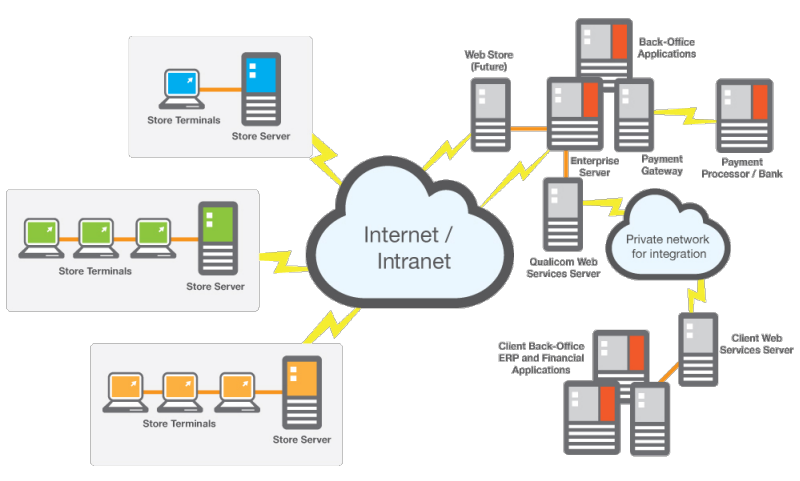This configuration applies to Retailarc Merchandise Enterprise Edition.
This diagram shows the configuration for three stores, two of which have three POS terminals and the other a single terminal. It also shows a centralized payment gateway and an application server to back-office systems, though these are integration add-ons and not part of the out-of-the-box solution.

Store Terminal
Each Store Terminal runs the Retailarc Enterprise POS application.
Store Server
The Store Server functions as a data caching and communications hub, connecting the Store Terminals to the Enterprise Server through the external network. In the event of a network outage, transaction data is saved locally on Store Server until the connection is restored. At that time, data is automatically resynchronized with the Enterprise Server. The Store Server retains staff and login information for a limited period so that security is maintained through outages.
While the Store Server is shown separately from the Store Terminals, they can co-exist on the same physical computer for greater affordability. If that computer fails, a different Store Terminal can pick up the primary responsibilities.
Enterprise Server
The Enterprise Server is the data collection and processing centre for the overall business. It also enables each store to manage its own back office functions (store reports, receive shipments, product requests, and so on) via the web application interface.
Payment Gateway
Some POS functions, such as payments by credit or debit card, are processed through a common Payment Gateway that can connect to a payment processor via the STore Server or the Enterprise Server.
Web Services Server
The Web Services Server is used to facilitate systems integration with external back-office systems.In the past, Qualicom has integrated Retailarc Enterprise with SAP for master product, pricing and inventory information, and customer systems for billing and CRM purposes.
